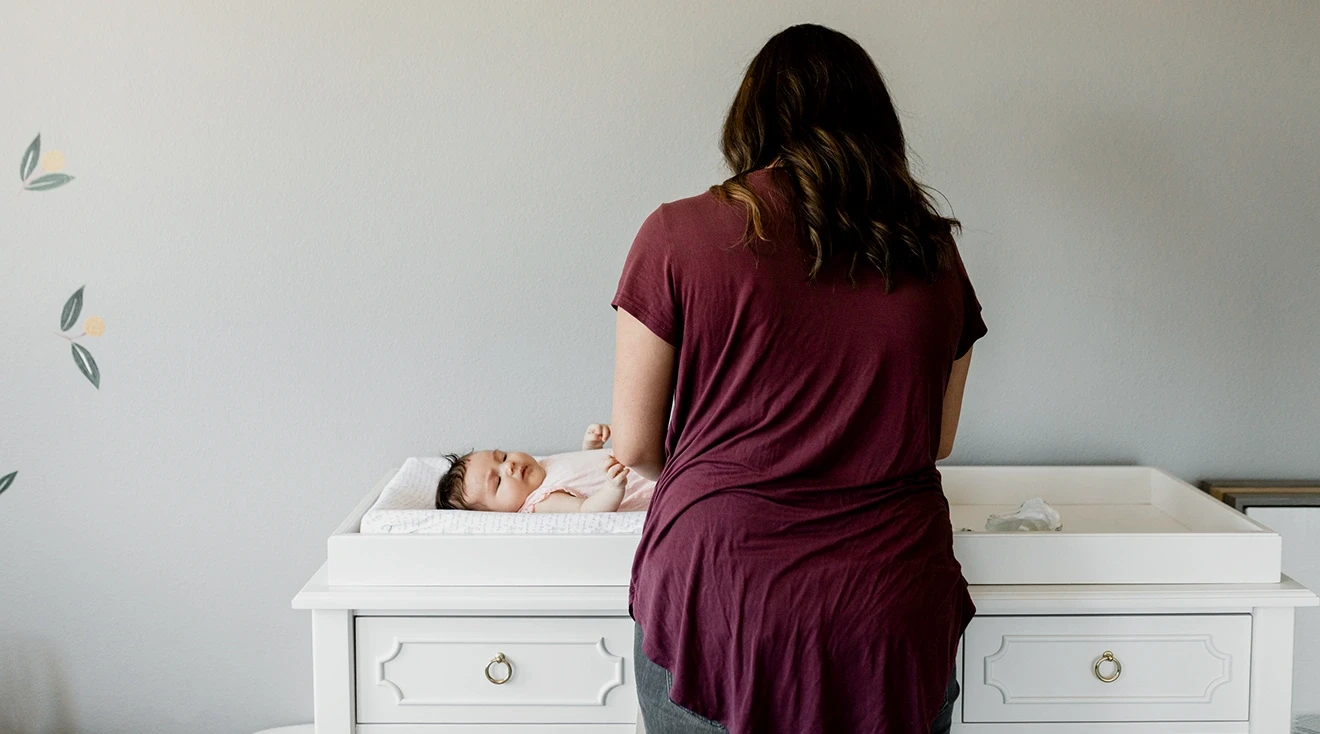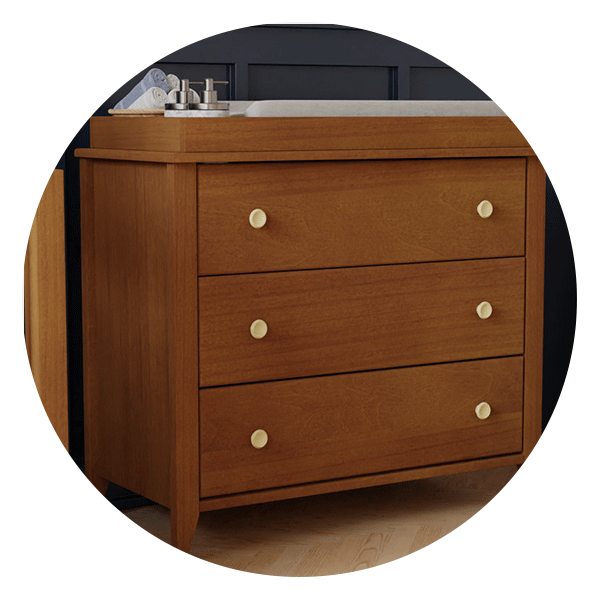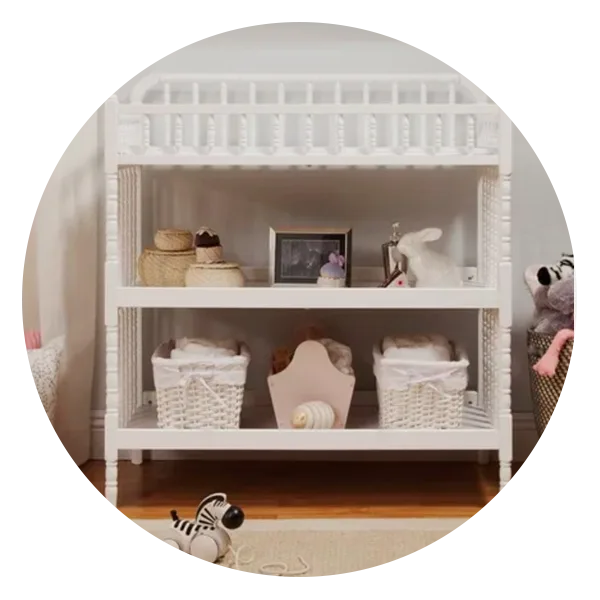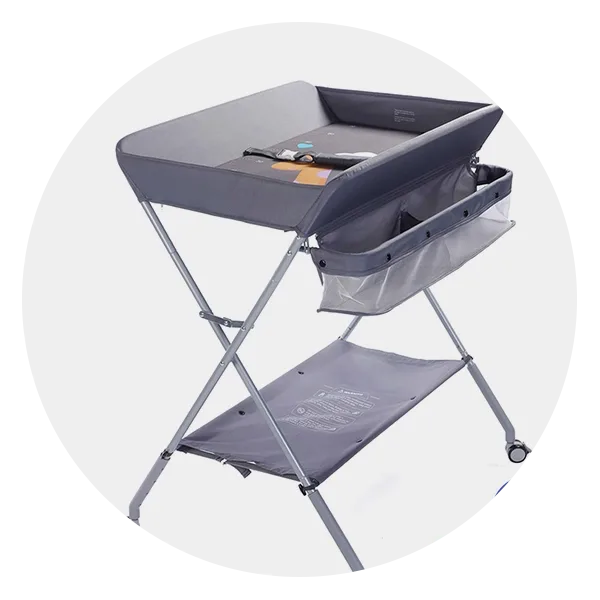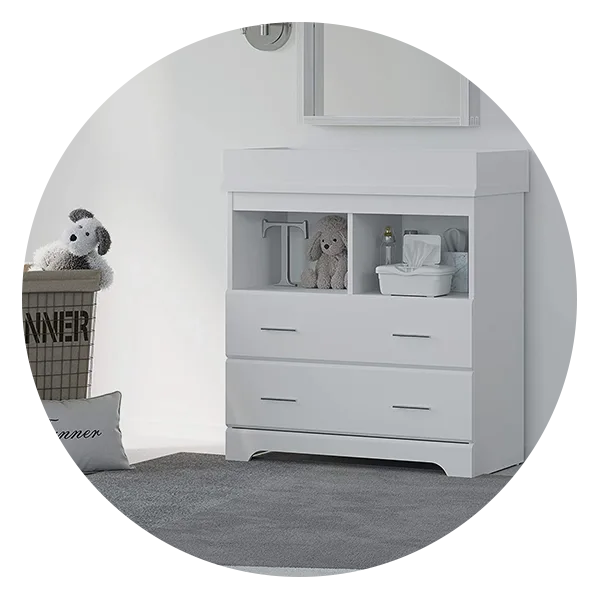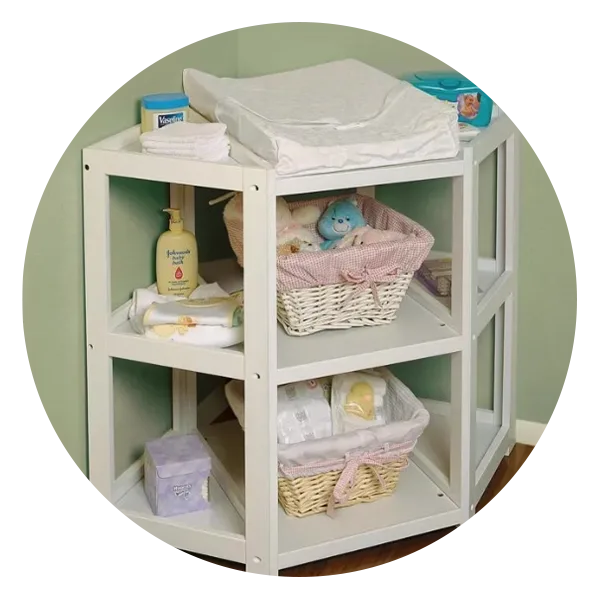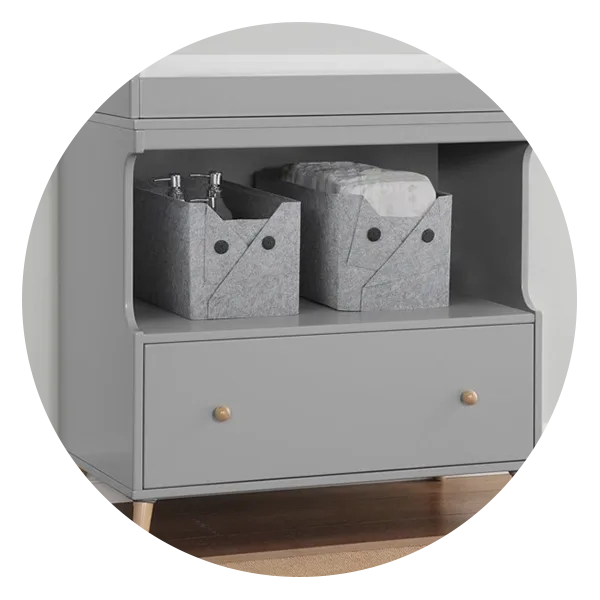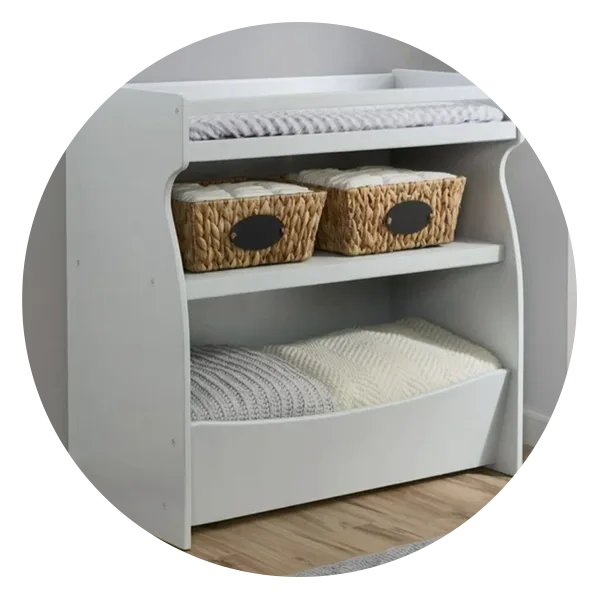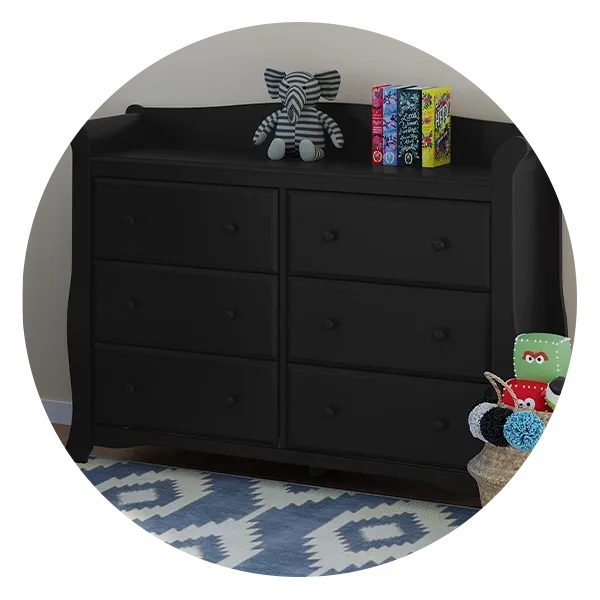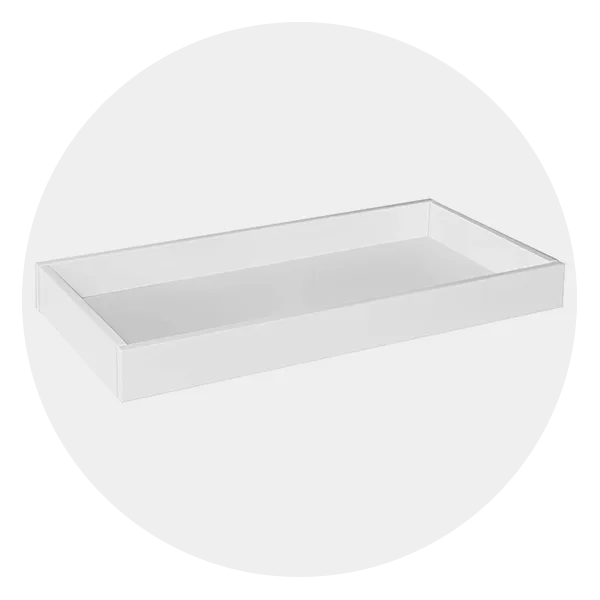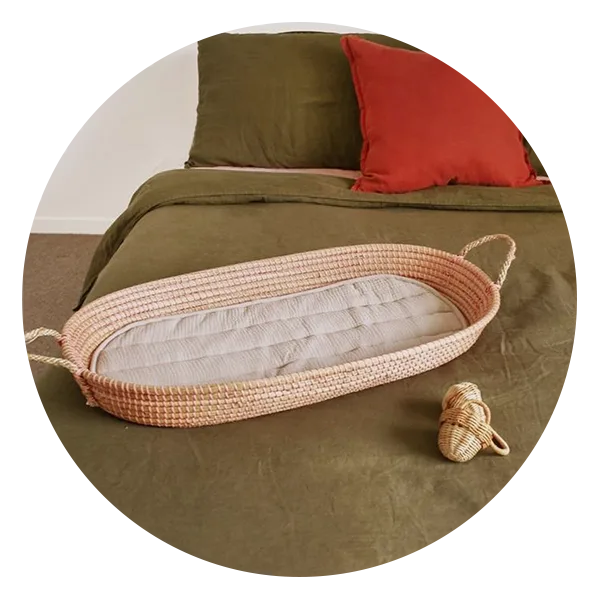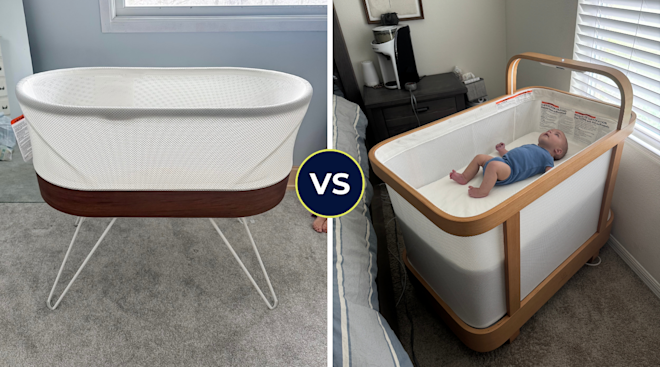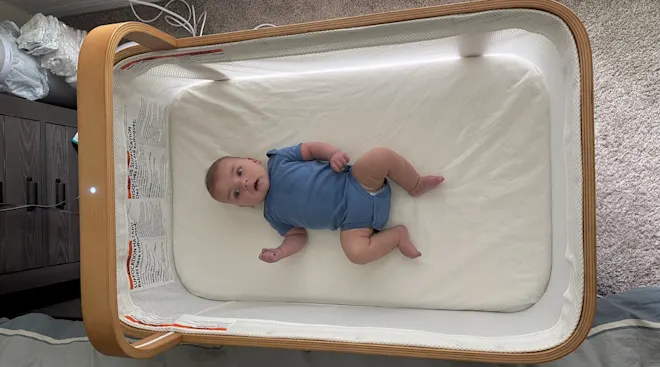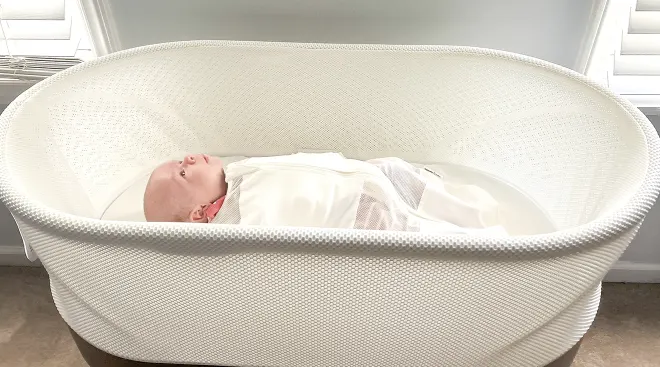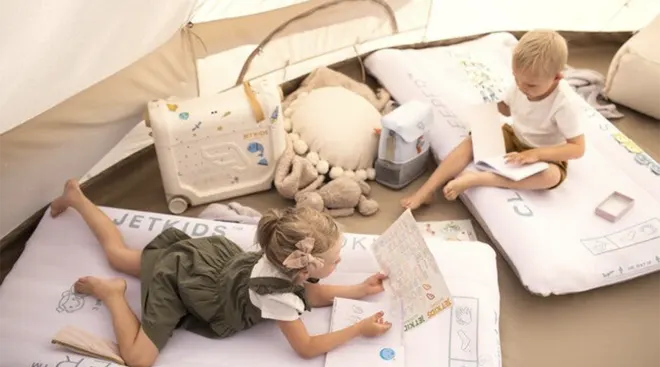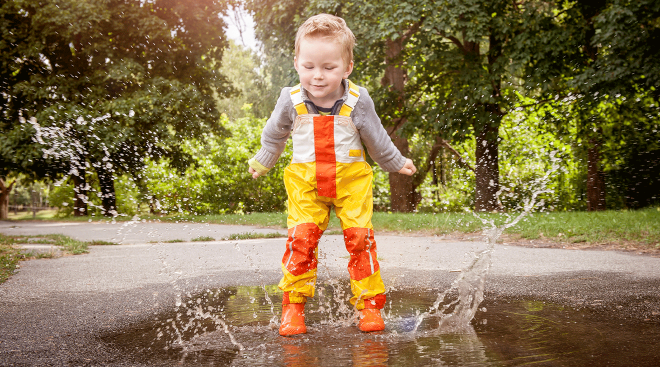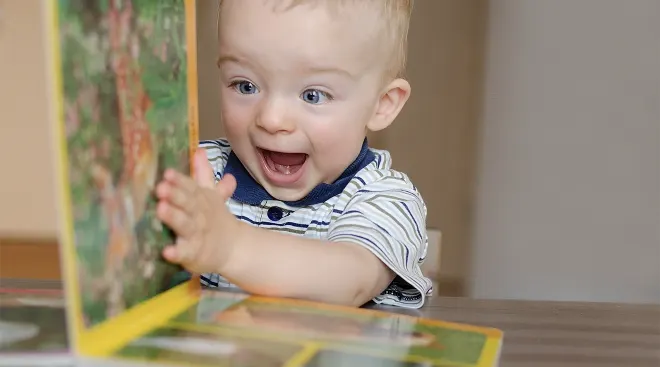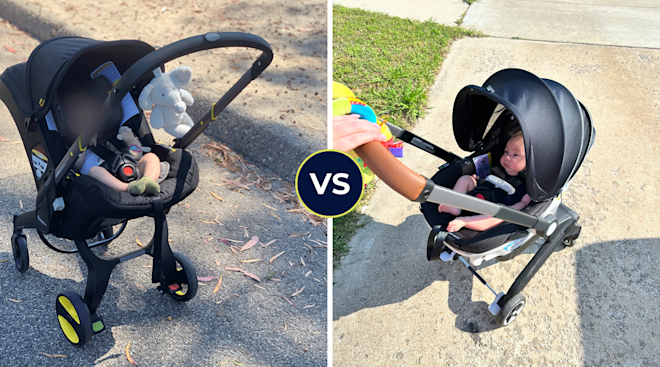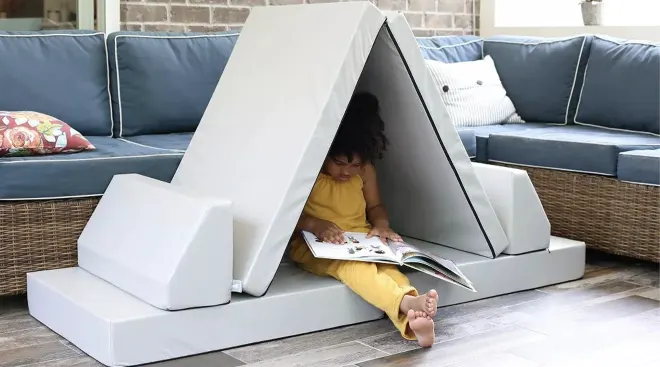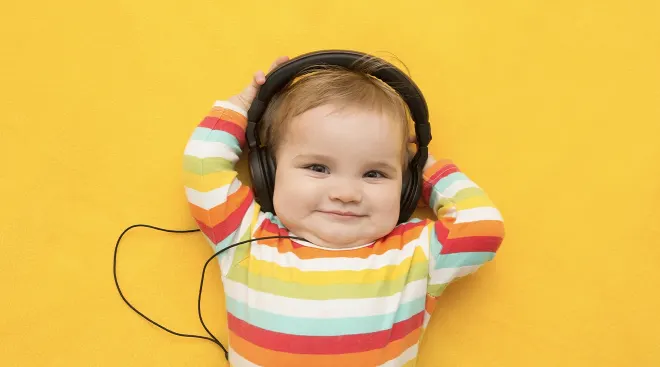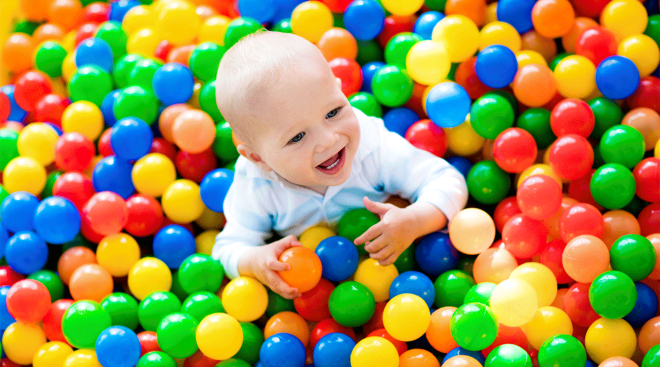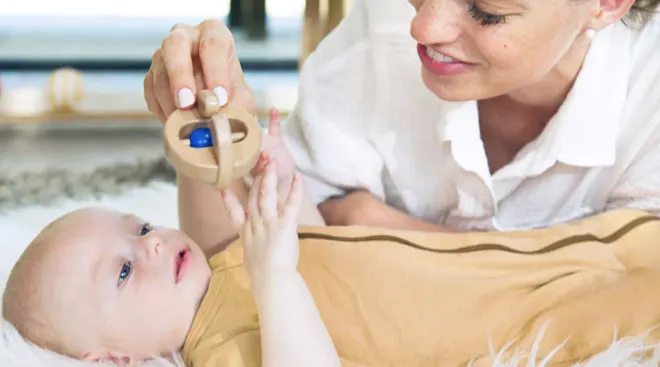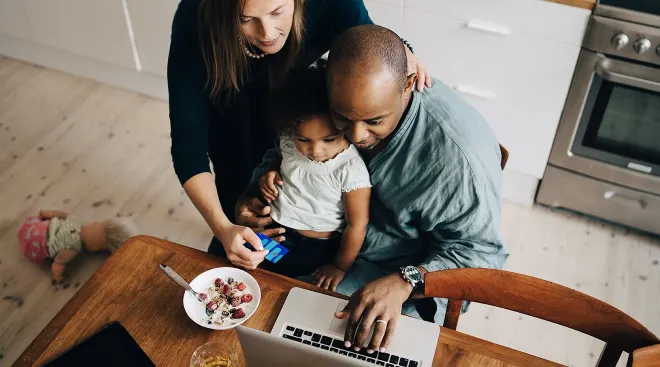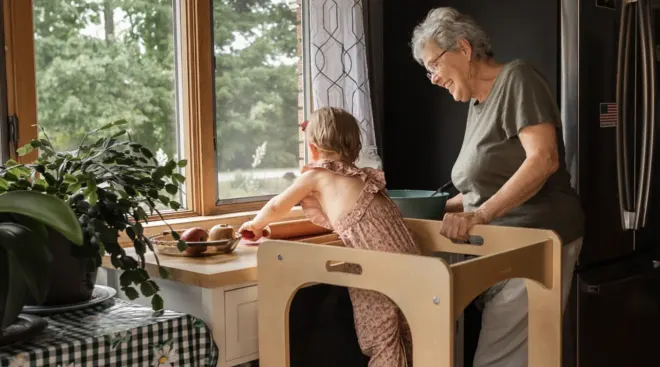The Best Changing Tables for Baby’s Nursery
Most parents will agree that changing dirty diapers is not their favorite activity. But having the right baby gear, like a baby changing table, can make the messy job a whole lot easier. The best changing tables keep all your baby supplies (think: diapers, lotion and wipes) organized and within reach, helping take the stress out of changing a squirming baby.
A lot of parents-to-be find themselves wondering if they really need a changing table for baby. And here’s the deal: They can take up a lot of space, which you may not have room for, so you can certainly get away with not having one and opt for using another surface (the top of a dresser, the bed, the floor) with a changing pad instead. But while a changing table isn’t a nursery necessity, it definitely comes in handy. “They’re designed to keep you from having to bend over and do things on the floor when you’re changing a dozen diapers a day,” says Jon Simon, MD, a primary care physician with Mercy Personal Physicians at Hunt Valley. Having all your diaper changing essentials within reach means you’ll never have to take your eyes (or hands) off baby. Changing tables can be versatile too: Once baby is potty trained, a dresser-style changing table with a removable changing tray can be repurposed and used as storage in your little one’s bedroom.
Having a hard time zeroing in on the right one for baby’s nursery? Take a peek at 10 of the most practical and chic changing tables available now. Diaper duty will be a cinch!
It’s important to look at a changing table as something you’ll get a lot of use out of, and potentially for years, says Peter Kerin, ACPC, of Foresight Childproofing, Inc. “Most parents, when you bring home a newborn, that baby is 6 to 8 pounds and not rolling around,” he says. “But some people will use changing tables through when a child is 3 years old. A lot changes with your child during that time.” To make sure you choose the best changing table for your family’s ever-evolving needs, we:
- Consulted with a pediatrician and three baby safety experts for their input on the most important aspects to consider when shopping for one of these tables.
- Looked at the most popular changing tables on the market and narrowed the field based on elements like footprint, safety features, storage capacity and overall appearance.
- Read reviews from real parents to get a better sense of how these tables perform for a variety of families. Only changing tables with an average review of four or more stars were included.
Editorial integrity is at the heart of everything we publish. Read about how The Bump develops and reviews all articles, including product reviews.
A changing table is a vital tool in helping you get your little one clean and dry with ease. Consider these options in your search.
Best Changing Table Dresser
- Greenguard Gold certified
- Built-in storage
- Sleek look
- Expensive
- Assembly may be tricky
This versatile baby changing table will be staple in your child’s room, from the newborn days through toddlerhood and beyond. The topper features a sectioned changing tray to keep the diapering essentials organized and within reach, which can be removed whenever you’re ready to ditch the diapers. The dresser features three ample drawers house baby’s itty bitty clothes, and is made with sustainable New Zealand pine. It’s Greenguard Gold certified, meaning it’s been screened for more than 10,000 chemicals and VOCs known to pollute indoor air, and it even comes with an anti-tip kit, to make babyproofing a breeze. This stylish, safety-conscious changing table is priced at under $500 and available in white, chestnut and natural wood.
Dimensions: 41.5" (L) x 20.3" (W) x 36.3" (H) | Changing area: 31.1" (L) x 17.5" (W) | Weight capacity: 30 lbs.
Best Changing Table With Shelves
- Non-toxic paint
- Open shelving
- Large safety rail
- Clutter will be visible
- Included pad is too thin for some
Changing table dressers are multi-use options that can grow with your child, but there’s something to be said about open shelving on a changing table—that way you can easily spot and grab any diapering product without having to open a drawer with a single hand (while your other is safely placed on baby). This white changing table from DaVinci is made from sustainable New Zealand pine and finished with non-toxic paint for a classic style, while the top boasts a helpful safety rail to prevent baby from falling off during diaper changes. What’s more, you can use it as a bookshelf, towel rack or home organizer once baby outgrows diapers.
Dimensions: 36.3" (L) x 19.3" (W) x 39.8" (H) | Changing area: 34.6" (L) x 19.4" (W) | Weight capacity: 30 lbs.
Best Portable Changing Table
- Inexpensive
- Adjustable height
- Two-year warranty
- Assembly can be tricky
- Surface may stain
Looking for a changing table for small spaces, or one that can easily be moved from one room to another? You’re in luck! One of the best changing tables we’ve seen for portability is this compact style from EGREE. Folding metal legs allow you to quickly and easily fold and move the entire changing table. Features like four different height adjustments and ample room for storage in the hanging basket organizer make this our top choice for the best portable changing table. And with a price tag under $100, it’s pretty affordable too!
Dimensions: 37" (L) x 29.9" (W) x 33.8" (H) | Changing area: N/A | Weight capacity: 33 lbs.
Best Small Changing Table
- Open shelving and drawers
- Petite
- JPMA certified
- Assembly takes time
- Bolt heads are exposed
When you’re living in a small space, you need an efficient changing table that doesn’t take up much real estate—which is why we love Storkcraft’s Brookside changing table. Not only is it one of the smallest changing tables we’ve seen on the market, but it offers both open shelving and drawer space, plus some impressive safety features, all packaged up in a cute, modern design. It’s Greenguard Gold as well as JPMA certified for baby’s safety and parents’ peace of mind, and comes with an anti-tip kit. And because the changing top is removable, this compact changing table offers ultimate versatility.
Dimensions: 34.1" (L) x 17.6" (W) x 38.9" (H) | Changing area: 31" (L) x 16" (W) | Weight capacity: 30 lbs.
Best Corner Changing Table
- Lots of storage space
- Compact footprint
- Changing pad included
- Assembly can be tricky
- Included changing pad is too firm for some
Not much room to spare in baby’s nursery? Not a problem! Just make a cozy corner into baby’s personalized changing station with this top-notch modern design from Badger Basket. This compact corner changing table allows you to change baby with their feet pointing toward you, and there’s additional storage space on either side that’s sure to come in handy. The table is functional (look at all that storage space!) and innovative—the best of both worlds.
Dimensions: 40.5" (L) x 28.8" (W) x 35" (H) | Changing area: 31.5" (L) x 16" (H) | Weight capacity: 30 lbs.
Best Modern Changing Table
- Sleek look
- Removable topper
- Open and closed shelving
- May have a paint smell at first
- Heavy
If you’re embracing a modern style for baby’s nursery, this changing table from Delta will be a perfect addition to the design. We can’t get enough of the sleek lines and angled legs of this mid-century-inspired piece. But rest assured, it’s got style as well as substance: This changing table features a built-in safety rail on the removable changing topper, an open shelf and a drawer. It’s made of sustainable New Zealand pine and rubberwood, comes with an anti-tip kit and is JPMA certified for safety.
Dimensions: 34.3" (L) x 20.8" (W) x 36" (H) | Changing area: 33.8" (L) x 18.8" (W) | Weight capacity: 50 lbs.
Best White Changing Table
- JPMA certified
- Converts to a bookshelf or toy organizer
- Sleek look
- Heavy
- Included pad isn’t thick enough for some
The best changing tables are versatile enough to suit your needs no matter what stage you’re at, and a white changing table is great since it can go with any nursery decor. This is key especially if you’ll be welcoming siblings in the future, or have a desire to change up your nursery every so often. That’s why the JPMA-certified Delta two-in-one changing table is our pick for the best white changing table. The versatile, curved design is super sleek and the open shelves and large storage bin at the base offer loads of room. It even converts from a changing station to a bookshelf, toy organizer or grown-up storage chest, which means you don’t have to worry about spending double when the time comes to buy new furniture.
Dimensions: 34.3" (L) x 18.8" (W) x 35" (H) | Changing area: 31" (L) x 17.3" (W) | Weight capacity: 35 lbs.
Best Black Changing Table
- Plenty of drawers
- Easy assembly
- Works as a dresser when baby is grown
- Expensive
- Drawers are too shallow for some
any classic nursery. This elegant sleigh-style dresser is easy to assemble and has a raised back and sides for added safety, plus six spacious drawers for storing diapers, wipes, clothes and more. Simply pop a changing pad on top, stock the drawers with everything you need and you’re good to go.
Dimensions: 50.9" (L) x 17.5" (W) x 40.1" (H) | Changing area: N/A | Weight capacity: Unspecified
Best Changing Table Top
- Wide color range
- Non-toxic paint
- Versatile
- Needs to be secure in place
- Expensive
There are plenty of changing table dressers that are sold with included changing trays, but if you already have a dresser you’d like to use for baby’s nursery, you can transform it into a full-on changing table with the simple addition of a changing table topper. This popular option from DaVinci is made from sustainable New Zealand pine and non-toxic finishes and fits a standard changing pad size. It even comes with the safety bracket you’ll need to secure it to the dresser, to prevent any unfortunate slips or slides.
Dimensions: 33.58 x 17.6 x 3.5 inches | Changing area: 33.58 x 17.6 x 3.5 inches | Weight capacity: 30 lbs.
Best Changing Table Basket
- Small footprint
- Easy to repurpose
- Cool boho look
- Baby should not be carried in the basket
- Included pad is a unique shape
Instead of a traditional changing tray, why not opt for a chic changing basket? This soft seagrass option, a Fair Trade item, lends a trendy boho flair to baby’s room while still meeting all your practical diapering needs, providing a safe, contained space to get baby changed. (Use the Reva basket with an Olli Ella cotton insert to create a soft, cushiony surface.) And once your diapering days are behind you, you can easily repurpose this changing basket as a toy basket, display tray or even a baby doll bed.
Dimensions: 31" (L) x 15" (W) x 4" (H) | Changing area: N/A | Weight capacity: N/A
You have options when it comes to changing tables. “Changing tables come in many sizes and setups,” says Alex Lund, founder and president at Safetynook, Inc. “Some parents like to use a removable changing pad on a dresser, while some nursing furniture comes with a box and a changing pad that can be removed later when not needed any longer and you have a nice dresser. There is also dedicated furniture just as a changing table with shelves for storage underneath.” However, there are some constants to look for, whatever option you choose. The experts we spoke to recommended looking for these elements as you shop:
- Raised sides. While experts stress the importance of closely monitoring your baby at all times on a changing table, many note that raised sides are a nice feature, too. “You always have to assume a baby is going to roll,” Simon says, adding that there’s no substitute for direct supervision, but raised sides are “a little bit of an insurance policy.”
- Ease of cleaning. Changing tables themselves are often made of materials that are easily wiped down. However, having a pad that can be washed is handy. “Get one that is easy to clean, as things do happen, or get a nice cover for a changing pad that is easily machine washed and dried,” says Lund.
- Storage space. It’s not required, but many changing tables will have included storage. That can be helpful for keeping your diapering gear within reach. “You want to have everything ready to change the diaper—wipes, towels, and whatever else you need,” Simon says. Dawne Gardner, senior manager of equity and child safety at Safe Kids Worldwide, agrees. “Ideally we would like for it to have storage so the baby is never left alone,” she says. “However, we don’t want to discourage a family that can’t afford a table with storage. We want families to understand they can never leave the child alone.”
- Wall mounting. Some changing tables have wall mounting kits; others need to be purchased separately. Either way, Kerin says it’s important to secure your changing table to the wall to avoid the risk of the table tipping.
- Weight limit. “Know what the weight limit is for putting your child there,” Gardner says. “You need to know that weight limit so you’re not putting a child that’s too big on that table.”
Plus, more from The Bump:
Jon Simon, MD, is a primary care physician based in Hunt Valley, Maryland. He is board-certified in pediatrics, and treats patients of all ages.
Peter Kerin, ACPC, is a father of three and the owner of Foresight Childproofing, a baby proofing company in Minnesota.
Alex Lund is the founder and president of Safetynook, Inc., a child proofing company based in San Francisco, California.
Dawne Gardner is the senior manager of equity and child safety at Safe Kids Worldwide. She has also served as the Injury Prevention Senior Specialist with the Comprehensive Children’s Injury Center at Cincinnati Children’s Hospital Medical Center, is a Certified Child Passenger Safety Technician, and serves on the board of directors for the National Injury Free Coalition for Kids.
Navigate forward to interact with the calendar and select a date. Press the question mark key to get the keyboard shortcuts for changing dates.

































